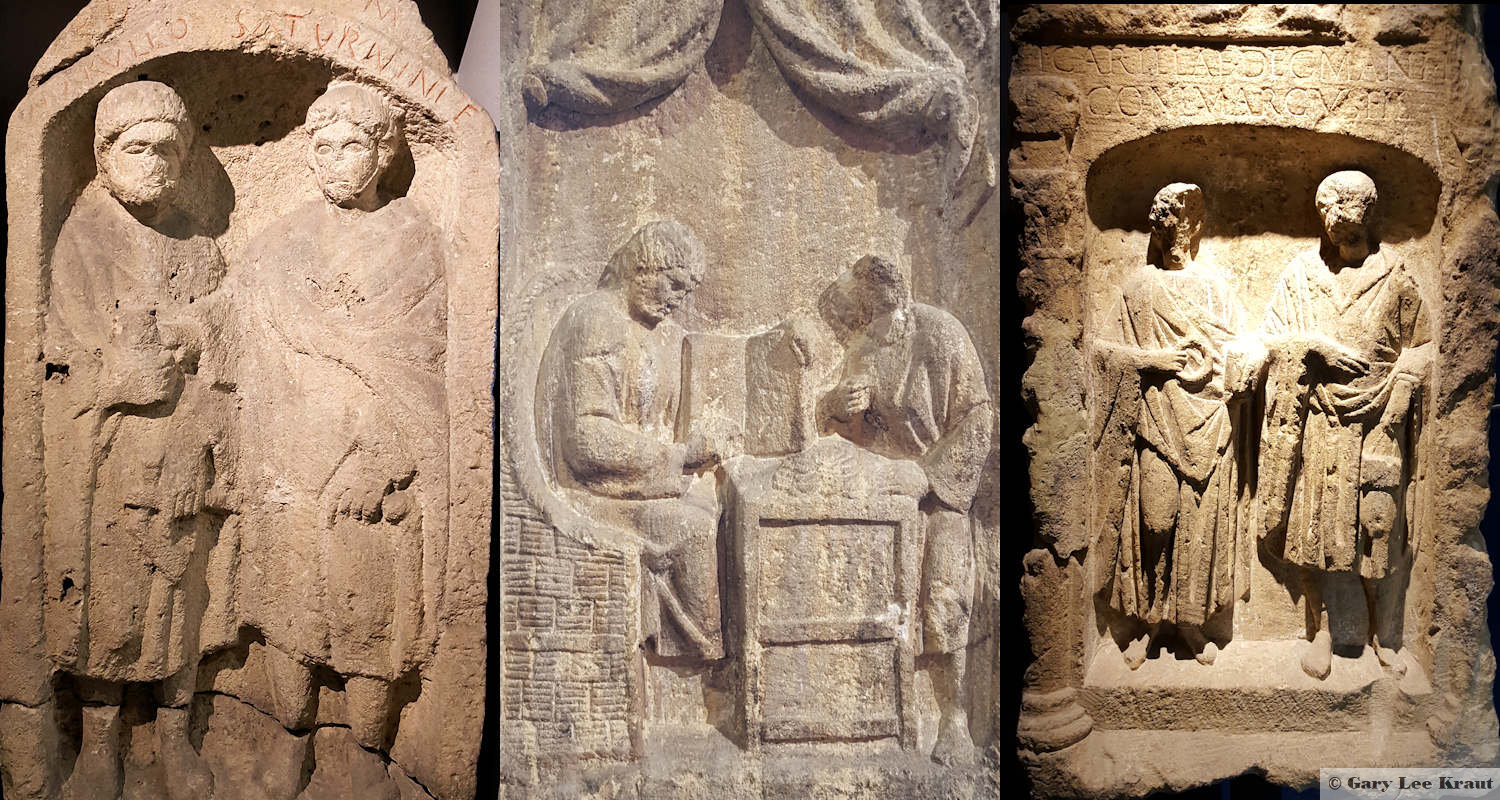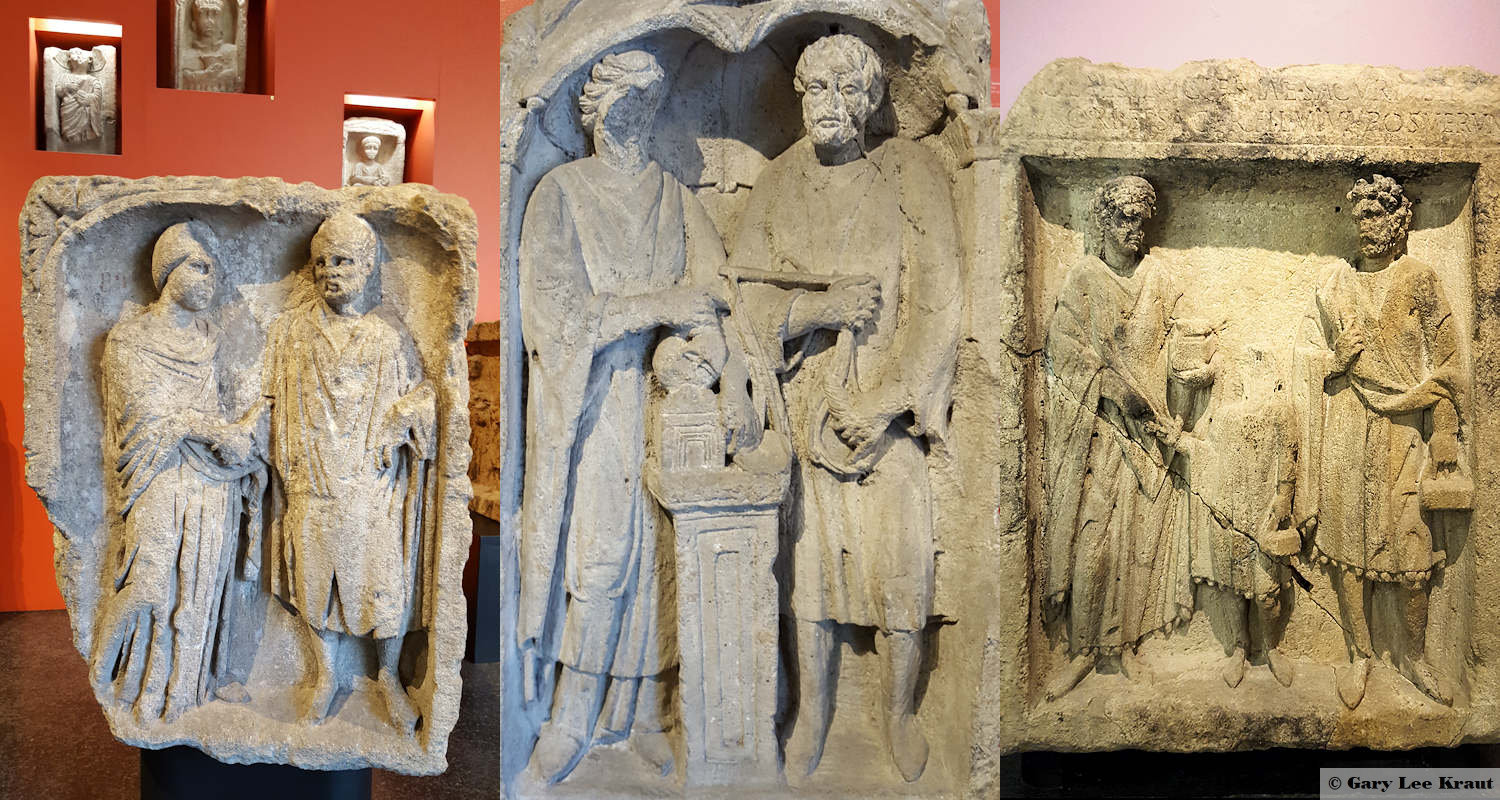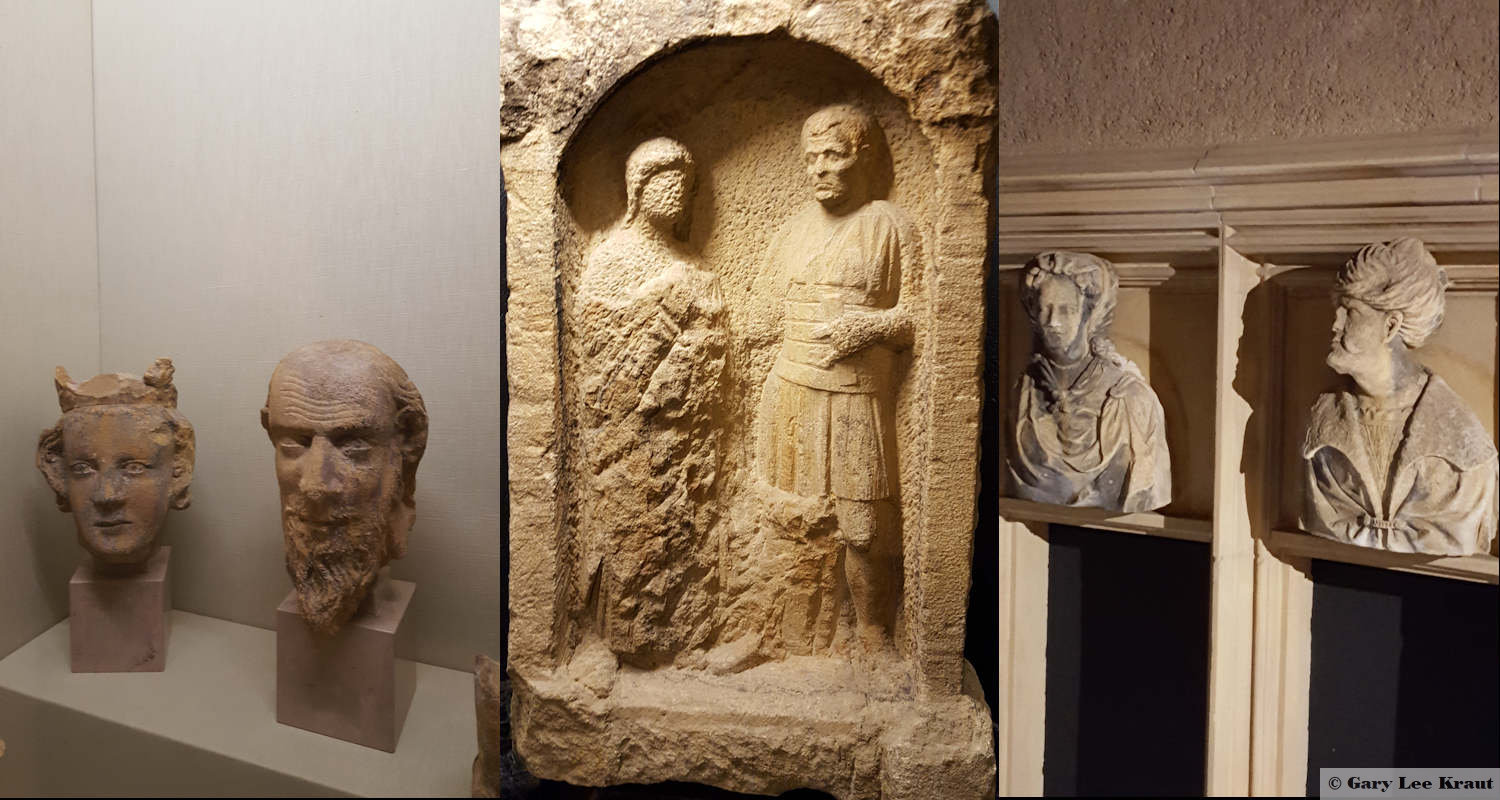
I wouldn’t have thought that a museum could be so romantic. Or is romantic not the word for it? Let’s just say that I didn’t expect to encounter so many couples here. In Metz of all places, that northeastern city with the ominous black and white flag. Yet there were couples everywhere in the city’s Cour d’Or Museum.
I’d barely passed the social distancing sign at the entrance when I spotted one: a man and a woman walking hand in hand just ahead of me. I entered the first room of the permanent exhibition just behind them. They walked up to the panel on the wall and stood shoulder to shoulder reading it. From a proper meter to one side, I, too, read about the origins of the town that the Romans called Divodurum Mediomatricorum.
Madame either read faster than monsieur or she gave up before finishing the panel. She let go of his hand and moved on. Or did the gesture reflect something deeper, some dissatisfaction or annoyance, even something as simple as the way he moved his lips as he read to himself in an audible whisper? It was certainly annoying to me.
I walked on among the extensive Gallo-Roman collection.
To some, the very idea of a museum is foreboding, and the term Gallo-Roman, indicating the Romanized culture of Gaul from the first through the fifth centuries AD, would be unlikely to reassure them. Neither would subsequent signs pointing to collections of the Early, High and Late Middle Ages, though those eventually give way to the mildly promising sign for the Renaissance.
Some travelers imagine that knowledge is required when visiting such a museum, or, crueler still, appreciation. But nothing more is required in this free museum, or any museum for that matter, than when visiting a park: a simple stroll will do. Something is sure to come of it—you’ll catch a sight or sensation that draws you one way or another or the scent of a thought or an idea—at the very least a bit of physical or mental exercise.
The couple I’d first seen soon disappeared. I was alone on my stroll. How fortunate not to be encumbered by anyone. It was then that I truly began to notice the couples and twosomes. They were everywhere: complicitous duos, ‘til-death-do-us partnerships, unselfconscious hand-holders, shoulder-to-shoulder soulmates, undying friends and eternal companions, along with complex trios, bosom buddies of indeterminate gender and questionable confidantes.
In the first several rooms I educated myself by reading the wall panels about the development of the Gallo-Roman city, but I was more curious about interrogating these ancient pairs without the voice of a historian. So I ignored the panels and focused on the figures.
They didn’t appear to be newlyweds, new lovers or fresh affairs. They seemed to belong together, cut from the same stone, so to speak, in it for the long run. I tried to decipher their expressions. None of them looked particularly happy. Nor did they look particularly unhappy. Did their inexpressiveness mask distress, dissatisfaction or disappointment? Resignation? Reproaches unanswered or ignored? Were those expressions of consent? Or of exchange or transmission? Were those faces of contentment? Now there’s a goal!
I studied them closely, each one, as though examining them that way would allow me to understand why they had stayed together as long as they had? As I scrutinized their stance, their dress, their fixed or absent gaze, I wondered: Did they rationalize their union? How so? I mean, did they not give in from time to time to a torrent of thoughts about alternative possibilities—would I be better off with someone else, or alone? Or did such questions have no meaning within the spans of their lives and the mores of their time?
Still, as a couple, or individually, did they think of themselves as virtuous or acquiescent or constrained? Or was theirs an easy, nearly natural covenant, one of comfort, convenience, family and/or love? Or the consequence of a contract imposed by one or the other or by some outside force? Were they putting on a good face for the sake of posterity?
I strolled on. Decades passed, and centuries. As time went on, the anger, the meanness, the drama and cross-purposes grew.
A third party occasionally entered the scene—an evil or supernatural force, a counselor, a savior, a commander, a sage? Was the couple in danger? Had new laws circumscribed their relationship? What help did they need? With communication? With sexual satisfaction? With forgiveness? A need to placate a new ruler or deity?
Did they, could they, “work” on their relationship or had the material of their union hardened to the point that it was no longer workable but simply accept-able? What did “settling” mean to them? Did they make their bed and then lie in it? And was that so bad? Had their bed been made for them?
I’d been in the museum for nearly an hour and a half by the time I left the Middle Ages. I was ready to leave. I skimmed through the Renaissance, following signs to the exit.
It was a fine summer day. I walked in the direction of the cathedral. The yellow limestone of the city’s old buildings glowed in the late afternoon sun.
The museum had presented me with nothing but questions. Yet what a curious and magnificent stroll it had been—unplanned travel therapy. Rarely has a museum felt so personal. I’d received no answers, yet I felt clear-headed, content, nearly euphoric. I felt a need to talk. I stood by the café nearest to the cathedral. I took out my phone and thumbed a text: Où es-tu? / Where are you?
© 2022, Gary Lee Kraut
Musée de La Cour d’Or, 2 rue du Haut Poirier, Metz. Located one block from the cathedral. Open daily except Tuesday, 10AM-12:45PM and 2-6PM. Free entrance.
Metz, capital of the historic Lorraine region of northern France, is attractively set along confluence of the Moselle and Seille Rivers. Other highlights of the city include its sunbathed Gothic cathedral, aka The Good Lord’s Lantern, with its acre-and-a-half of stained glass; its buildings made of a yellow limestone called pierre de Jaumont; its covered food market by the cathedral; its train station, itself a prodigious Germanic temple. See the site of the Metz Tourist Office for more.







